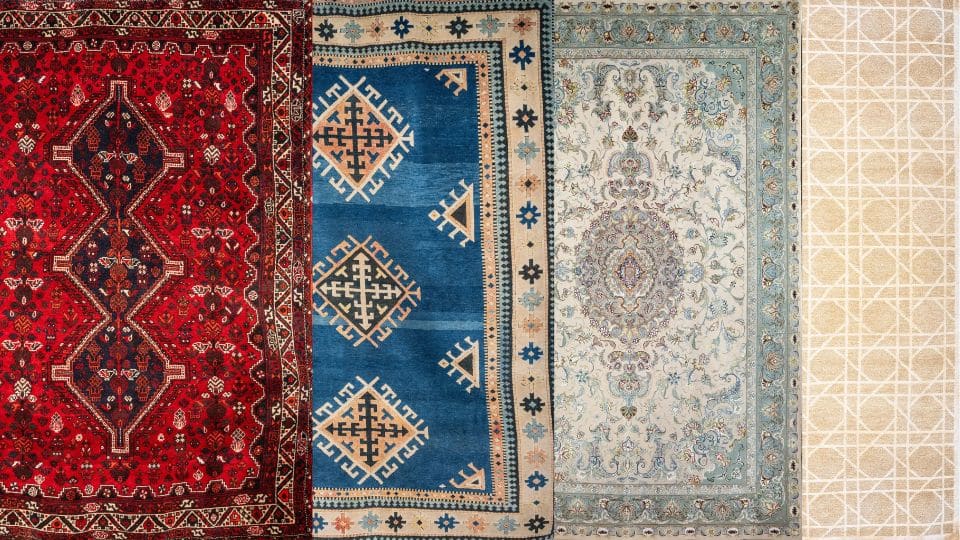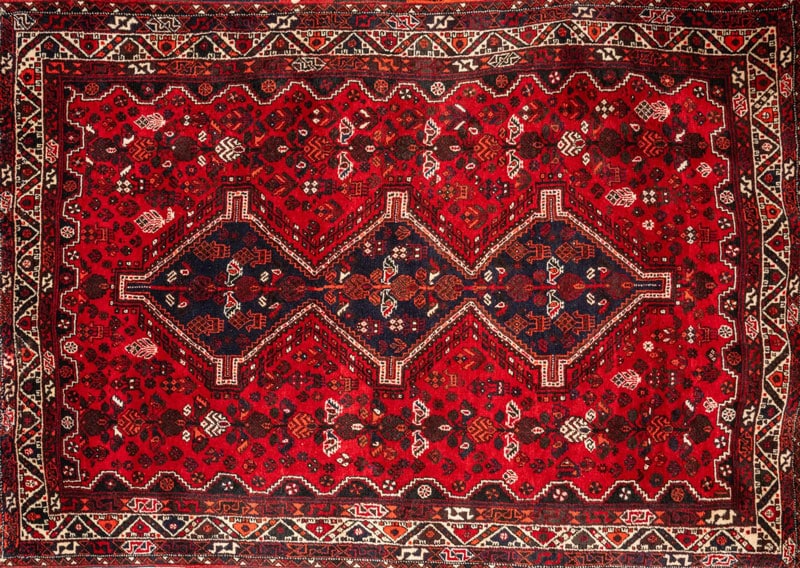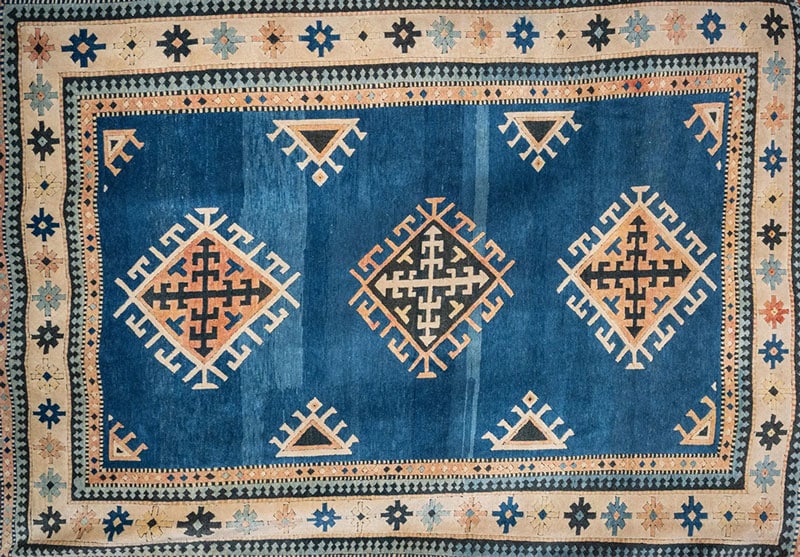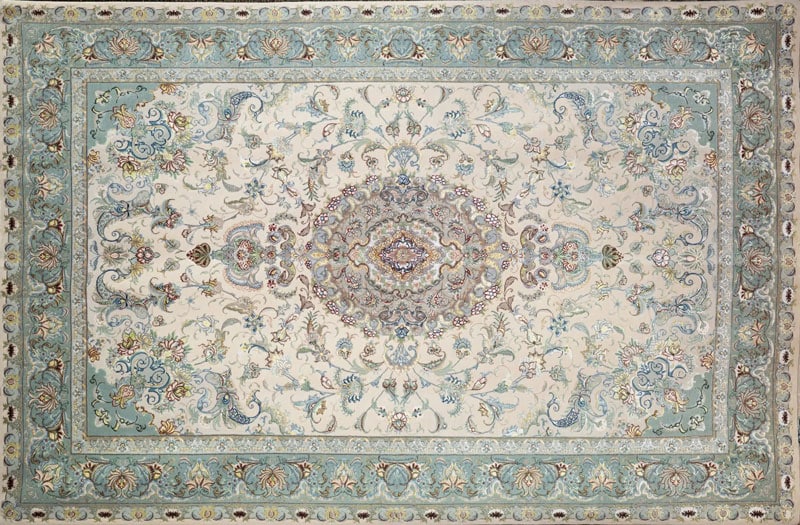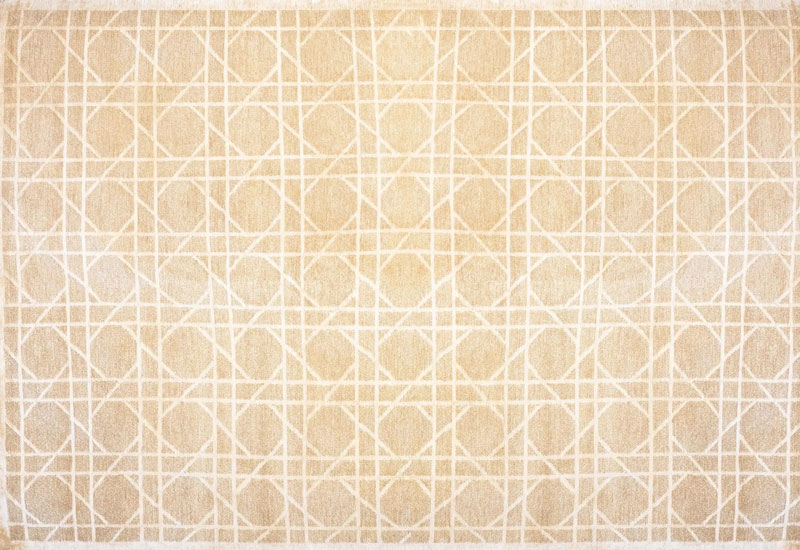Persian rugs are more than just home decor. They’re living art, full of history, craftsmanship, and culture. One of the most fascinating elements of Persian rugs is their use of color. But these colors aren’t random. Every shade woven into a Persian carpet has meaning. Understanding these colors not only deepens your appreciation for the rug but also connects you to the story behind it.
In this post, we break down the symbolism behind the most common Persian rug colors and what they reveal about the rug’s origin, purpose, and the weaver’s intent.
Why Color Symbolism Matters in Persian Rugs
Color isn’t just an aesthetic choice in Persian rug-making. Traditional weavers used natural dyes from plants, minerals, and insects. Each dye was carefully selected for its vibrance, durability, and symbolism. These color choices often reflected the weaver’s beliefs, wishes, and emotions. In many cases, the colors even communicated social status or spiritual ideas.
Today, while some modern rugs may use synthetic dyes, many Persian carpets still follow these time-honored color traditions.
Common Persian Rug Colors and Their Meanings
1. Red: Power, Passion, and Vitality
Red is one of the most dominant and frequently used colors in Persian rugs. It symbolizes energy, luck, courage, and joy. In traditional culture, red could also ward off evil. You’ll often find it in rugs intended for special ceremonies or celebrations.
Red dyes were often made from madder root, a plant that gives a deep, lasting crimson. The shade can vary from brick to bright cherry, depending on the region and dyeing process.
When you see red: Think of life, celebration, and strong emotion.
2. Blue: Tranquility, Truth, and Protection
Blue symbolizes trust, honesty, and the infinite nature of the sky and sea. It’s also believed to have protective powers, especially against the evil eye. Blue rugs or blue motifs often signal peace and spirituality.
Historically, blue was created using indigo dye. In some areas, a deep navy was reserved for more expensive or sacred pieces.
When you see blue: Think serenity, depth, and spiritual connection.
3. Green: Paradise and Sacredness
Green has powerful religious connotations in Persian culture. It represents paradise, renewal, and the Prophet Muhammad. Because of its sacred association, it was traditionally used with care and respect.
Natural green dyes were hard to produce, often made by overdyeing yellow with blue, which made it rarer and more prized.
When you see green: Think of reverence, balance, and the divine.
4. Black: Mourning, Strength, and Contour
Black isn’t commonly used as a base color but is often used in outlines or small motifs. It helps other colors stand out while symbolizing power and formality. In some cases, it also suggests mourning or loss.
Black dyes came from oak galls or iron oxide, and their use required skill to prevent color bleeding.
When you see black: Think of boundaries, structure, and seriousness.
5. White & Ivory: Purity and Peace
White or ivory tones represent cleanliness, innocence, and peace. In tribal rugs, these shades often came from undyed wool. You’ll see white in geometric designs or as a contrast to darker tones.
When you see white: Think clarity, honesty, and simplicity.
6. Yellow & Gold: Wealth, Glory, and Light
Yellow and gold suggest prosperity, warmth, and the sun. These colors were popular in royal or high-status rugs. Dyers used plants like saffron, pomegranate rind, or weld to create various golden hues.
When you see yellow: Think optimism, energy, and abundance.
7. Brown: Earth, Fertility, and Humility
Brown is a grounding color, often linked with nature and humility. It was commonly used in tribal or village rugs where natural, undyed wool was accessible. It doesn’t scream for attention, but it adds depth and richness.
When you see brown: Think stability, reliability, and nature.
Color Combinations and Regional Styles
Persian rug colors often vary by region. For example:
- Tabriz rugs often feature soft pastels and intricate patterns.
- Qashqai rugs, made by nomads, lean toward bold reds, blues, and earth tones.
- Isfahan rugs tend to showcase refined palettes with sophisticated blues and ivories.
Understanding a rug’s regional origin can help explain its color use and motifs. Some areas used color to tell stories or embed local legends into the patterns.
Color Aging and Fading: A Feature, Not a Flaw
Over time, natural dyes age and mellow. This process, called “abrash,” creates slight variations in color. Far from being a defect, abrash is a signature of handmade authenticity. It shows the weaver’s hand and the life of the rug.
So if you notice uneven tones in an older Persian rug, that’s part of its charm and value.
How to Choose a Persian Rug Based on Color
Color is personal. Some people are drawn to dramatic reds; others prefer calming blues. But beyond taste, the color of a rug can also set the mood of a room:
- Warm tones (reds, golds, browns) create a cozy, welcoming space.
- Cool tones (blues, greens, ivories) lend a more serene, open feeling.
If you’re looking to add a Persian rug to your space, it’s worth considering what the colors represent—not just how they look.
You can browse our collection of authentic Persian rugs in our carpet shop and explore different styles by color, size, and region.
Final Thoughts: Reading the Rug
A Persian rug is like a book woven in thread. Its colors speak a language of tradition, hope, memory, and artistry. Whether you’re an experienced collector or just starting out, understanding color symbolism brings new layers of meaning to every piece.
Next time you look at a Persian carpet, don’t just admire its beauty. Ask what it’s trying to say.

